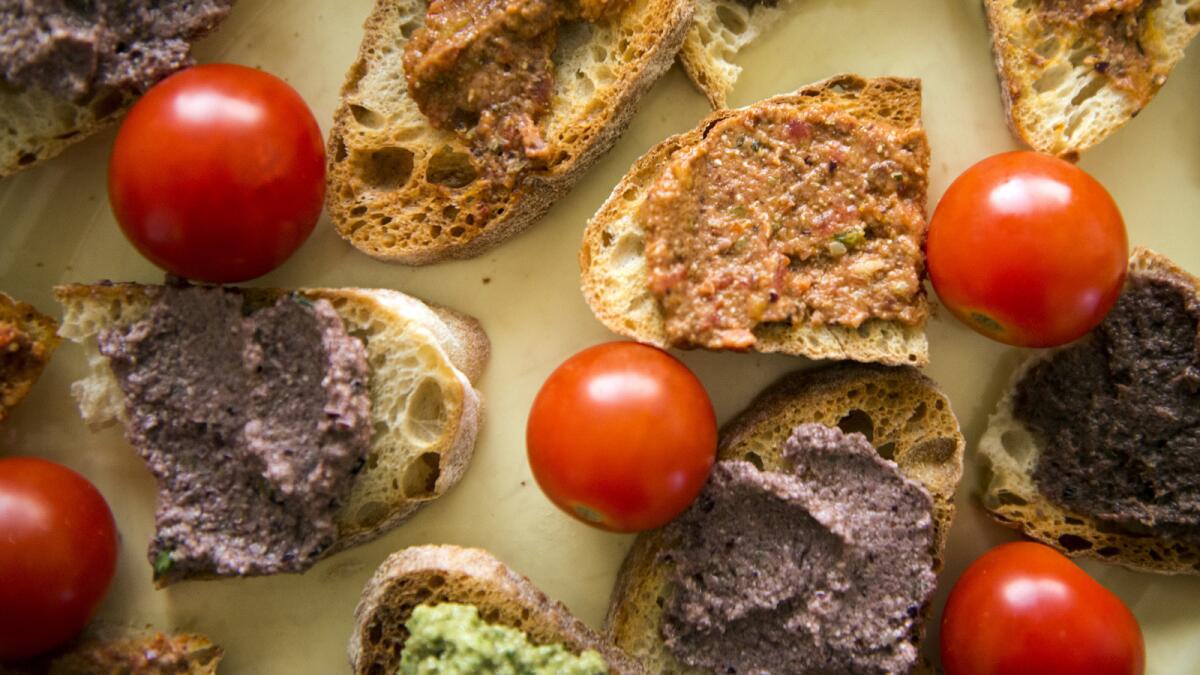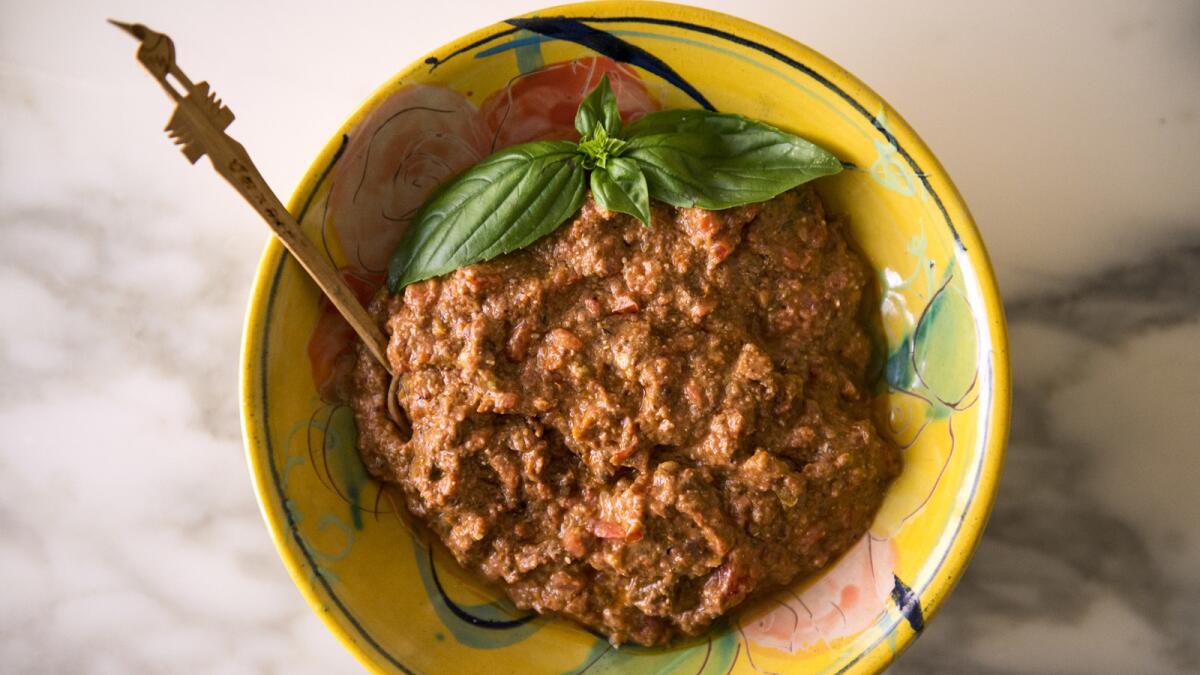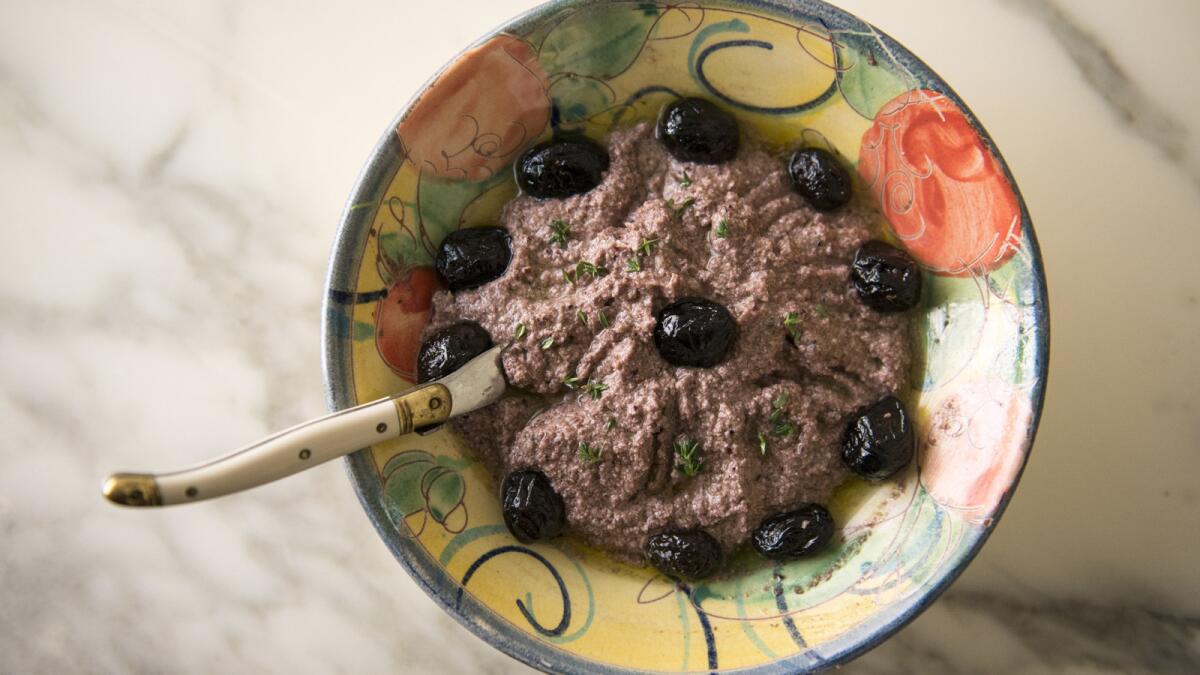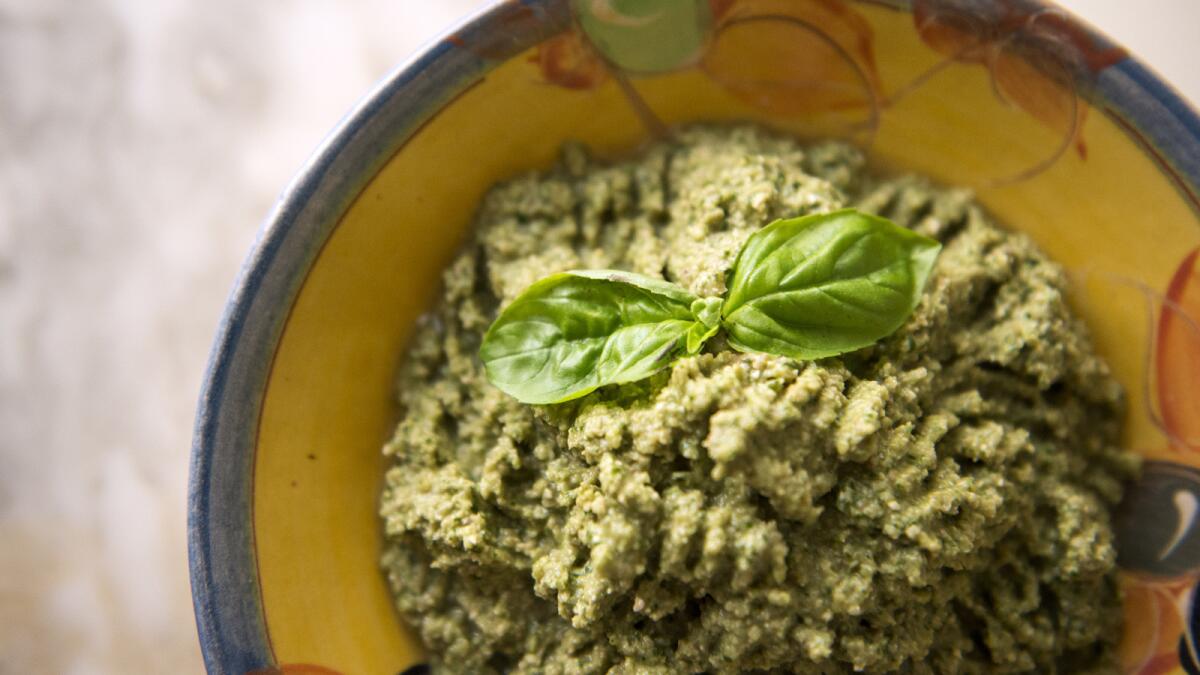Making tapenade, the Provençal olive paste, for a California kitchen

- Share via
Tapenade, a word we’ve seen on California restaurant menus and supermarket jars for more than two decades, is — or should be — an olive paste. It’s a signature dish of Provence, the olive-producing, Mediterranean region of France. There, the olives are mashed with anchovies, garlic, capers, olive oil and herbs such as thyme and rosemary, all key flavors of the region.
There are references to olive pastes with anchovies in old Roman cookbooks, indicating that tapenade had been around in the Mediterranean for thousands of years before the ancient people of Provence gave it its name, which refers not to the olives that are its main ingredient, but to the capers that give the dish its pungency. But it is in Provence that the condiment took hold and remains a beloved hors d’oeuvre, generally spread on thin slices of toasted bread but also used to stuff vegetables and to accompany fish, lamb, and chicken.

Recipe: Greek olive, tomato and feta tapenade »
In California, tapenade has been popular since the early 1980s, when Alice Waters showcased the food of Provence in her restaurant and in her cookbooks. When I moved here from France in the 1990s, I saw it often on menus, although it wasn’t always what I knew as tapenade. Just about any food that could be blended into a dip was given the name (unless it was deemed “hummus,” another spread that’s routinely mislabeled). The purist in me did not approve.
Today, things are much the same. It seems that every produce board in California has a recipe on its website with the word “tapenade” in it. In an online search, you will find tapenade made with everything from white beans to eggplant to figs to raisins to pistachios.
I still insist that tapenade should be fundamentally an olive paste and that an authentic Provençal tapenade should contain capers, anchovies and olives. But I’ve mellowed when it comes to allowing other ingredients into the blend.
One of the reasons I’m more open to variations on this sublime condiment is that the olives most available in California – kalamatas – don’t lend themselves to the traditional Provençal tapenade formula. They’re brinier than the fleshy black Nyons used in Provence, and their flavor is a bit metallic. They need to be tempered with other ingredients or blended with other olives, such as dry- or oil-cured imported black olives, or amfissas, a pale brown, rather meaty Greek olive that’s often just labeled “Greek.”
Using the olives that are consistently available in local olive bars, I’ve come up with a number of spreads that I willingly call tapenade. I’ve stuck with olives that are not flavored (for example, with chiles, garlic or preserved lemon); but I did use large almond-stuffed green olives to make a terrific, textured tapenade with lots of basil as well as anchovies, garlic, lemon juice and olive oil.

Recipe: Kalamata and oil-cured olive tapenade with tuna »
The tapenade that’s closest to the Provençal classic is made with equal parts kalamatas and dry-cured black olives. Dry-cured olives are saltier than kalamatas and have a rich flavor that balances out that briny flavor of the kalamatas. Instead of anchovies, try blending tuna with the olives to create a substantial condiment that’s terrific as a spread and that makes a great dip for crudités as well as a stuffing for tomatoes and to fill deviled eggs.
Since Greek olives are so ubiquitous in California, I went Greek with two of the recipes and blended in feta. One of these recipes is as Californian as it is Mediterranean, with sun-dried tomatoes standing in for some of the olives, and finely chopped fresh tomatoes added to the mix. You can use all kalamatas or combine them with amfissas. Both of the olive-feta purees, especially the one with fresh tomatoes stirred in, make terrific pasta sauces. A great pasta to use is orecchiette, as the tapenade settles into the hollows of the “little ears.”

Recipe: green olive and almond tapenade with basil »
And why not call this new subset of olive pastes “California tapenade.” They’re incredibly easy to make in a food processor, and since you’ll be able to find the olives for them at just about any local supermarket, you can whip them up on a whim.
How to pit olives:
It’s pretty easy to find olives that are already pitted, in jars and at olive bars. It is (obviously) very important to pay attention when you pit them for a tapenade, so that no pits end up in the food processor along with those olives.
Recipe: Greek olive tapenade with feta »
An olive pitter — which doubles as a cherry pitter — is a handy tool. But just as useful is the flat side of a chef’s knife. Put one or a few olives on your work surface under the flat side of the knife and lean on the knife. The olive will split on either side of the pit, and it will be then easy to disengage the halves of the olives from the pit. Be sure to discard the pits in another container so they don’t get mixed up with your pitted olives.
More to Read
Eat your way across L.A.
Get our weekly Tasting Notes newsletter for reviews, news and more.
You may occasionally receive promotional content from the Los Angeles Times.









